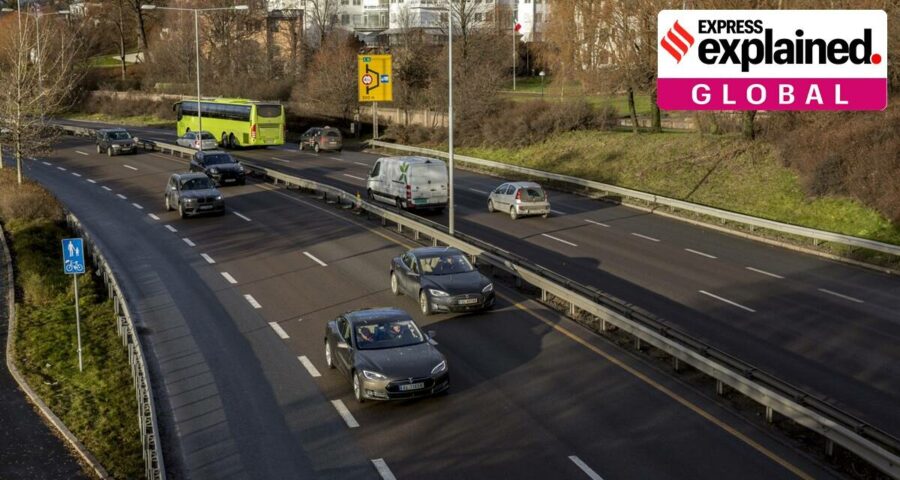Last year, the market share of BEVs rose to 54 per cent, up from 42 per cent in 2019, as per data released by the Norwegian Road Foundation (OFV). Only a decade ago, BEVs made up just 1 per cent of the overall market.
In 2020, Norway further cemented its position as a world leader in renewable technologies, as battery electric vehicles (BEVs) made up more than half of all vehicles sold in the country during the year.
Last year, the market share of BEVs rose to 54 per cent, up from 42 per cent in 2019, as per data released by the Norwegian Road Foundation (OFV). Only a decade ago, BEVs made up just 1 per cent of the overall market.
If hybrid vehicles are included, the share of electric vehicles in 2020 is 83 per cent. Petrol and diesel cars, which commanded a 71 per cent market share in 2015, are now at 17 per cent.
Also last year, Germany’s Volkswagen replaced US-based Tesla as the largest electric vehicle producer in the country.
How Norway became a electric vehicles pioneer
Norway, which is the biggest producer of crude oil in Western Europe, has in the recent past made a shift from fossil fuels to renewable energy. A country roughly the size of Maharashtra in terms of area, it began the electric push in the 1990s in an effort to cut pollution, congestion, and noise in urban centres.
In 2017, Norway’s parliament set a non-binding goal to ensure that all cars sold should be zero emissions by 2025. The UK and Germany plan to do this by 2030, and France by 2040. In India, the government has set a target of 30 per cent vehicles becoming EV by 2030.
To achieve its target, Norway has been giving tax incentives for fully electric vehicles, which make them cheaper to buy compared to similar internal combustion (IC) engine models. Norway also taxes IC engine cars more heavily than most European countries.
The government lets electric cars run on bus lanes, while toll roads are free for them. Parking lots offer a free charge, and new charging stations are continuously being built on the nation’s highways — a mix of regular charging stations and fast-chargers. At the moment, Norway has 10,000 publicly available charging points.
Currently, Norway has the highest per capita all-electric (battery only) cars in the world – over 1,00,000 in a country of just over five million people. The country does not manufacture cars (with the exception of a Norwegian city electric car called Buddy produced by a homegrown firm Buddy Electric) and pretty much all of its vehicle fleet is imported.
The country’s policies have also encouraged carmakers to use Norway as a testing ground. As per the CNN report, Volkswagen’s luxury brand Audi was the market leader in 2020, selling 9,227 units of its e-tron model, followed by Tesla’s Model 3, which sold 7,77o units. Volkswagen’s ID.3 came third at 7,754.
Among fossil fuel-driven cars too, Norway has encouraged petrol cars over diesel ones. To do this, some of the country’s regions began charging higher road tolls for diesel cars than for petrol vehicles. Because of such policies, the share of diesel vehicles fell from 75.7 per cent in 2011 to 8.6 per cent in 2020.
As per a Reuters report, although BEVs had in the past crossed the 50 per cent mark in market share in individual months, 2020 was a special achievement since these cars crossed the combined share of models with IC engines for a year as a whole.
Now, alongside its advances in electric vehicles, Norway is also pushing for the next frontier — hydrogen fuel cell vehicles.
Experts, however, say Norway’s policies are difficult to replicate in other parts of the world, mainly because the country can offer generous subsidies thanks to its revenues from oil and gas production.
Thanks to its hydrocarbon wealth, Norway has been able to build the world’s largest sovereign wealth fund, currently valued at $1.3 trillion.
Source: Read Full Article


